Japanese kitchen hacks
日本のキッチンの使い方:
ingredient substitutions
and storage tips
食材の代替と保存のコツ
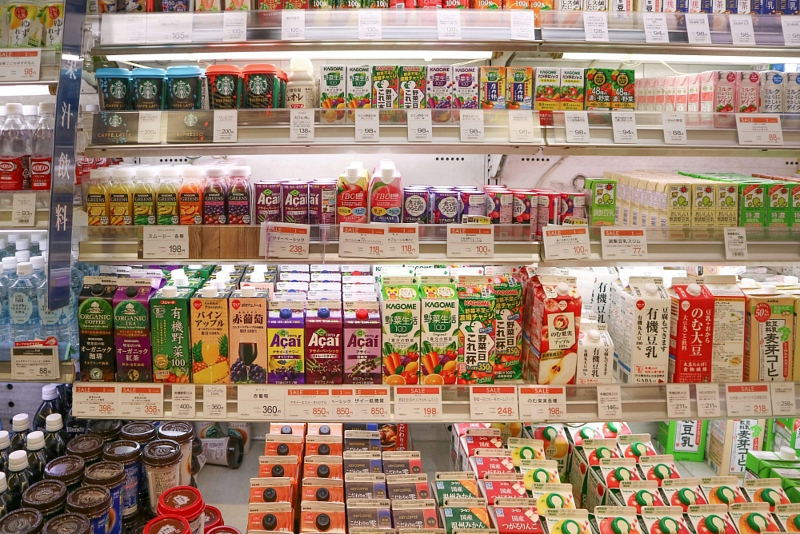
Years ago, I started occasionally shopping at Kinokuniya International Supermarket when I was desperate for something “from home.” Later, it was National Azabu in Hirō. I also was a regular visitor at the Foreign Buyers Club website until, unfortunately, it closed. Amazon Japan has since become the go-to place for its response time and vast product base. Costco is also here and is another option. But my choice for high-quality Western food products is Nissin World Delicatessen in Azabu-juban. It’s a bit expensive but if you really want a turkey from the US, some lamb from Australia or, if you’re lucky, an artichoke from California, then this is your place. For everyday shopping, I go to my closest chain supermarket, York Foods. All the recipes here have been edited and tailored for Japanese kitchens and ingredients found in the Tokyo metro area.
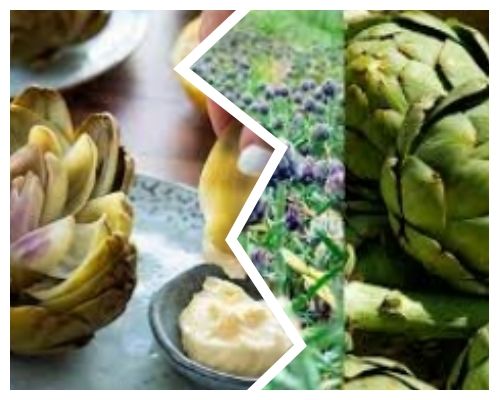
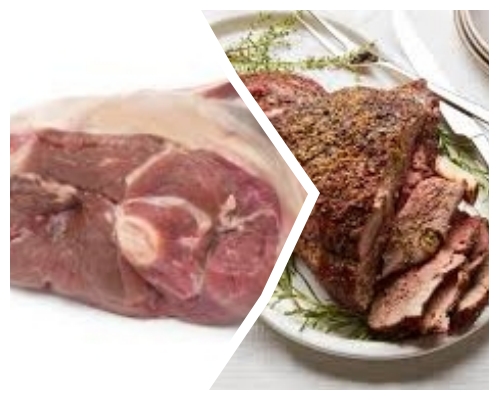
ここ数年、時々、紀伊国屋スーパーマーケットで買い物をしています。何か「故郷からのもの」が必要な時にね。後に、広尾のナショナル麻布にも足を運ぶようになりました。また、残念ながら閉店したフォーリン・バイヤーズ・クラブのウェブサイトにもよくアクセスしていました。今では、迅速な対応と豊富な品揃えのAmazon Japanをよく使っています。コストコもあるし、別の選択肢もあるけれど、私が高品質の西洋食品を買うのに選ぶのは、麻布十番の日進ワールドデリカテッセンです。ちょっと高いけれど、アメリカからの七面鳥や、オーストラリアからのラム肉、そして幸運なことにカリフォルニアからのアーティチョークが欲しいなら、ここが最適な場所です。普段の買い物は、一番近くのチェーンスーパーマーケット、ヨークフーズに行きます。 ここにあるすべてのレシピは、東京都内の一般的な日本のキッチンと食材に合わせて編集されています。
About shopping for ingredients
食材の買い物について
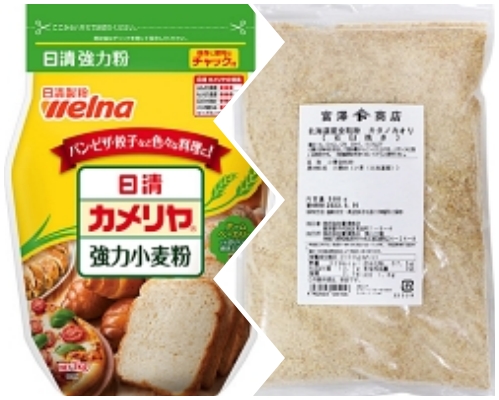
小麦粉:日本の小麦粉は北米と比べてグルテンの含有量が低い傾向があります。パン作り、ペストリーやその他の焼き菓子を作る際には、「パン用小麦粉」や「強力粉」のラベルの小麦粉がおすすめです。詳細は、パンのページ、日本の小麦粉01をチェックしてください。
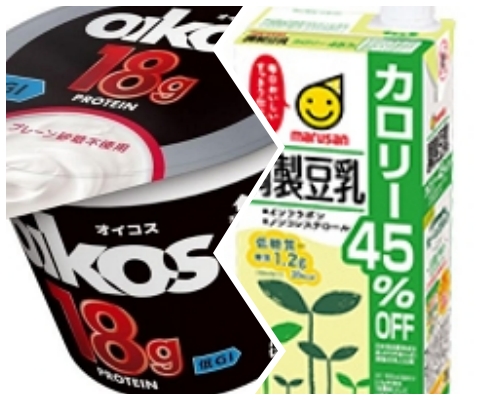
Dairy Products: Dairy products can be used the same as in the US but package sizes tend to be smaller and cost more. Tofu or soy milk can usually be substituted for many recipes.
乳製品:乳製品は米国と同じように使用できますが、パッケージサイズが小さく、値段が高い傾向があります。一部のレシピでは豆腐や豆乳が代替品として使えます。
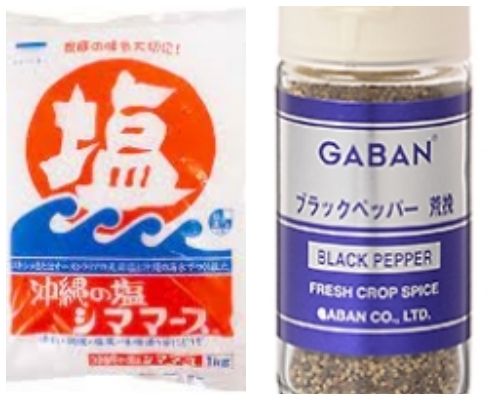
ハーブとスパイス:日本では一般的な新鮮なハーブや乾燥ハーブ、スパイスが手に入りますが、小さなパッケージでやや高価な場合があります。一部は外国食品専門スーパーで入手可能です。一部の特殊なスパイスは外国食品専門スーパーで手に入ります。
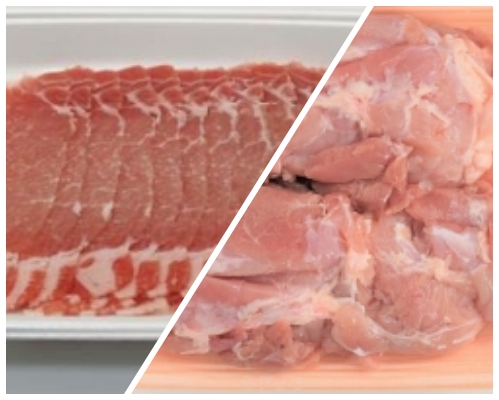
Meat Cuts: Japanese supermarkets often display different cuts of meat compared to what you’d find in North America. It’s easy to adapt recipes based on what’s available in a regular market. Larger Western-style cuts can be found at foreign food markets like Nissin World Delicatessen in Tokyo or online at The Meat Guy.
肉のカット:日本のスーパーマーケットでは北米で見つけられる肉のカットとは異なることがよくあります。通常の市場で入手できるものを基にレシピを適応させるのは簡単です。北米でみられる大きな肉のカットは東京の「日進ワールドデリカテッセン」やオンラインの「ミートガイ」で見つけることができます。
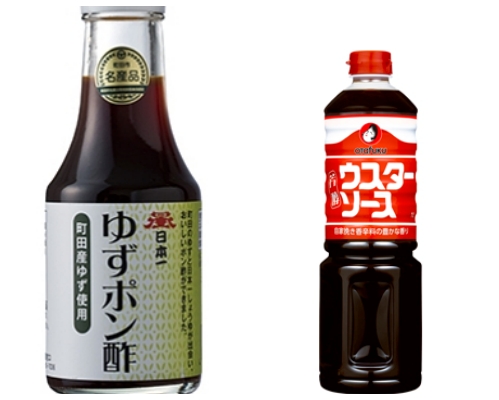
Condiments: Essentials like olive oil, vinegar, mustard, and Worcestershire sauce are common but imported brands may be hard to track down and can be expensive.
調味料:オリーブオイル、酢、マスタード、ウスターソースなどの必需品は一般的ですが、輸入ブランドは見つけにくく、高価な場合があります。
Recipe Adaptations for Japanese Kitchens
日本のキッチンに合わせたレシピの適応
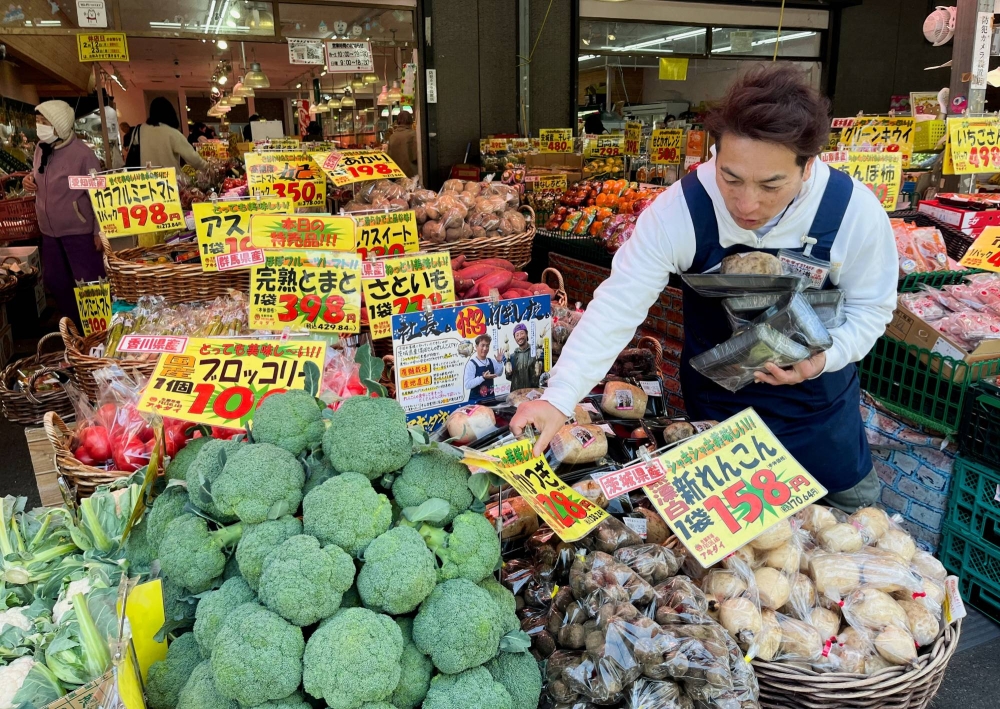
Frequent Use: Shopping’s a whole different game here compared to the US. In the US it is commonly a weekly affair, stocking up for the week ahead. In Japan, I’ve become like the average shopper and make a daily run to the market. I almost always shop with a list. It saves money, cuts down on impulse buys, and ensures I’m using fresh produce
頻繁な買い出し:東京での買い物はアメリカとは全然違います。アメリカでは週に一度のおおまかな買い物で、次の週の準備をするのが一般的です。しかし日本では、私も一般的な買い物客のようになり、毎日スーパーに行くようになりました。ほとんどの場合、リストを持って買い物に行きます。それでお金が節約できるし、衝動買いも減り、新鮮な食材を使うことになります。
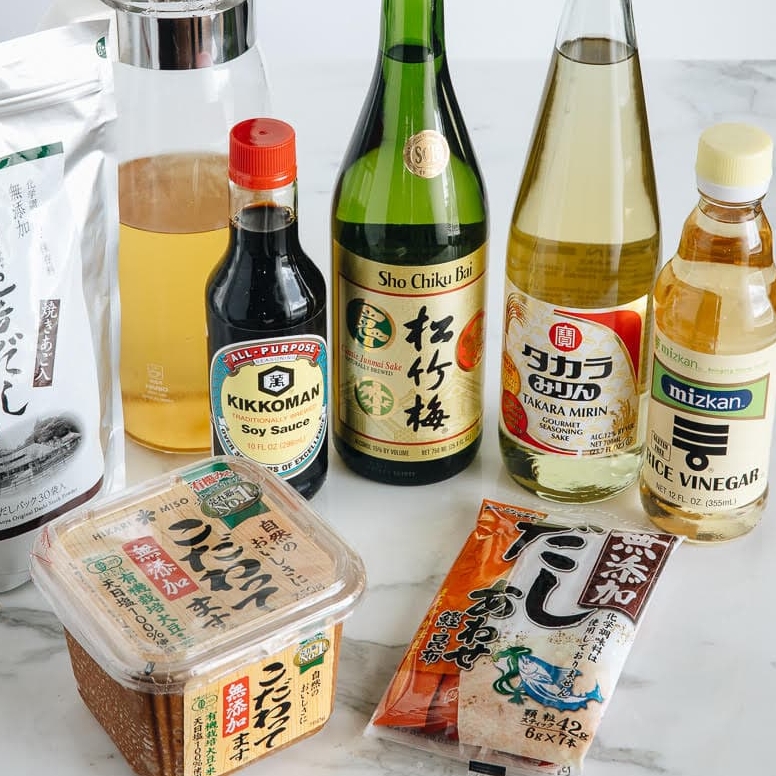
Adapt Recipes: Very often ingredients commonly used in Western cooking are not available so you learn to adapt by tweaking recipes or finding suitable substitutes — or sometimes no substitutes at all.
レシピの適応:西洋料理でよく使われる材料がここでは一般的には手に入らないことがよくあるので、レシピを微調整したり、適切な代替品を見つけてください。しかし、場合によっては代替品がないこともあります。
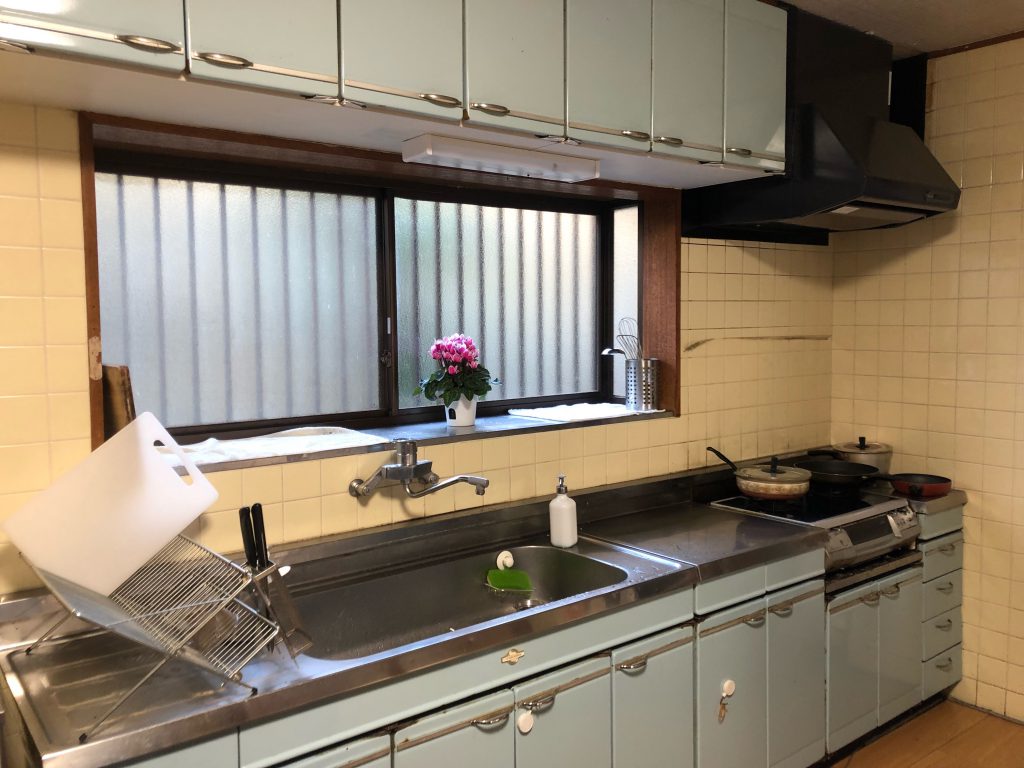
Size: All five of the Japanese kitchens I’ve cooked in have been very compact by western standards. At 180cm tall, I have had my fair share of run-ins with low cabinets and doorways. I’ve learned to make do with those tiny counters and sinks and I’m a firm believer in the power of mise en place and tidying up as you go.
サイズ:私が料理をした日本のキッチンは、西洋の基準に比べて非常にコンパクトです。身長180cmの私は、低いキャビネットや扉と頻繁にぶつかります。小さなカウンターやシンクでうまくやる方法を見つけてください。そして、使うものはすぐ片付けることが大切です。
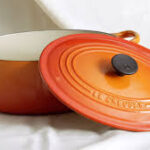
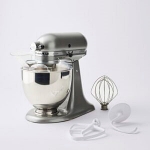
Cooking Equipment: When I first landed in Japan I didn’t bring much in the way of kitchen items. But an American friend living near Tokyo let me send a few heavy things to him in advance of my move, including my trusty Cuisinart food processor, which is been chugging along 40 years now. I also owned some great Le Creuset pans and a Dutch oven—they’re pricey, but well worth it. My kitchen’s stocked with good knives, cutting boards, pots, and pans too.
調理器具:日本に初めて来た時、キッチン用品はあまり持ってきませんでした。しかし、日本に来る前に、いくつかの重いものを、東京近郊に住むアメリカ人の友人に送りました。その中には、今では40年間愛用している私の頼れるクイジナートフードプロセッサーも含まれています。また、素晴らしいル・クルーゼの鍋とオランダオーブンも持っています。それらは高価ですが、それだけの価値があります。私のキッチンには、良いナイフ、まな板、鍋、フライパンも揃っています。
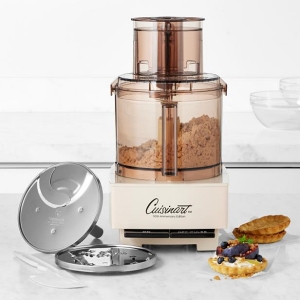
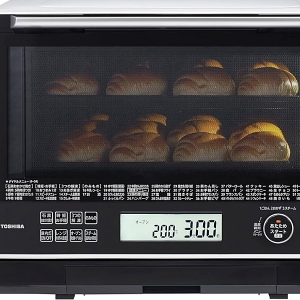
Electric appliances I use regularly: Rice cooker, hot water pot, toaster oven, Kitchen Aid stand mixer, large blender, immersion blender, IH cooker, Japanese style oven/microwave, microwave oven, InstantPot pressure cooker. I use a Toshiba oven with the following measurements: Width: 394 mm, Depth: 314 Height: 232mm. By US standards this would be more like a big toaster oven. But it is reliable and easy to use and programmed for more things than I would ever use. It will fit a large chicken and a small turkey. Like all ovens, it has its hot spots that I need to pay attention to. Many recipes tell you to put the food you are cooking on the middle rack or the bottom rack. Japanese ovens are too small for this and are usually only two positions — I only use the bottom level.
調理器具:日本に初めて来た時、キッチン用品はあまり持ってきませんでした。しかし、日本に来る前に、いくつかの重いものを、東京近郊に住むアメリカ人の友人に送りました。その中には、今では40年間愛用している私の頼れるクイジナートフードプロセッサーも含まれています。また、素晴らしいル・クルーゼの鍋とオランダオーブンも持っています。それらは高価ですが、それだけの価値があります。私のキッチンには、良いナイフ、まな板、鍋、フライパンも揃っています。 私は、以下のサイズの東芝製オーブンを使っています:幅:394mm、奥行き:314mm、高さ:232mm。米国の基準では、これは大きなトースターオーブンに近いものです。しかし、信頼性があり、使いやすく、多くの料理がプログラムされています。大きな鶏や、ちょっと小さめの七面鳥が入ります。すべてのオーブンと同様に、注意しなければならない“ホットスポット”があります。多くのレシピは、調理中の食品を中間ラックまたは底のラックに置くように指示していますが、日本のオーブンはそれには小さすぎます。私のオーブンには2つの位置しかありません—私は底のレベルしか使いません。
Metric Conversion: All the recipes here have been converted to the metric system for weight, volume, and temperature. Especially for baking, weighing ingredients with a digital scale is the way to go—it’s all about precision.
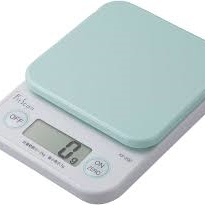
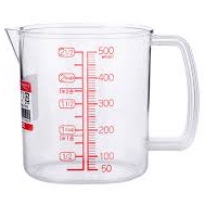
メートル法への変換:ここにあるすべてのレシピは、重量、体積、温度がメートル法へ変換されています。特にベーキングでは、デジタルスケールで材料を量ることが重要です。つまり、正確な計量がとても重要です。
Food Storage, Weather and Power:
Even with air conditioning, storing fruits, vegetables and flour can be a problem sometimes. My solution? Refrigerate almost everything—most fruits, vegetables, flours, nuts—especially during the very hot and humid summer months. I bake my own bread and always store it in the frig. Luckily, since I work from home, the AC is always on in the summer, so food spoilage isn’t a major issue. As for root veggies like potatoes, onions, and garlic? Just find someplace coolish and dark.
In my recipes, I try to mention pan sizes in metric measurements, especially for baking bread, muffins, cakes, or casseroles, because the appropriate size is important for the finished product.
食品の保存、天候、電力について:
エアコンがあっても、果物や野菜、小麦粉を保存するのは時々問題となります。私の解決策は?ほとんどすべてを冷蔵庫に入れることです—ほとんどの果物、野菜、小麦粉、ナッツ—特に蒸し暑い月には。私は自分でパンを焼いて、いつも冷蔵庫に保管しています。幸い、自宅で仕事をしているので、夏は常にエアコンが入っており、食品の腐敗は大きな問題ではありません。じゃがいも、玉ねぎ、にんにくなどの根菜に関しては?涼しい、暗い場所を見つけることにはちょっとしたプロになりました。
私のレシピでは、特にパン、マフィン、ケーキ、またはキャセロールの焼き具合が重要なので、フライパンなどのサイズはメートル法で記述されています。

Can you say it in English?
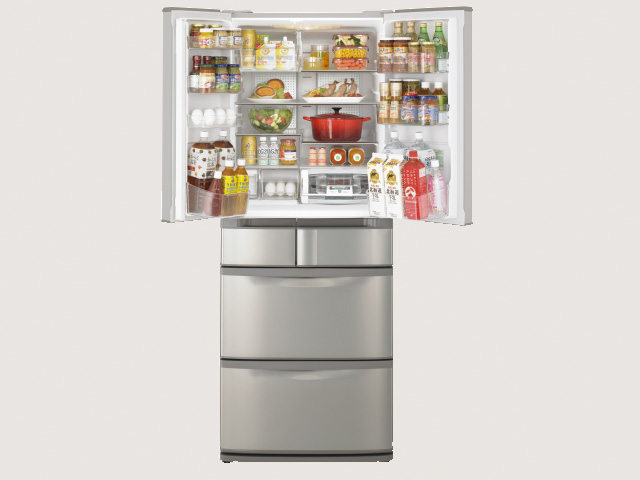
Issues with power! In my experience, most Japanese residences are not equipped for running several high voltage appliances at the same time. If I turn on the coffee maker and the oven at the same time the breaker will trip within 20 seconds. So think ahead and but remember where the circuit breaker is. You will soon learn which electric appliances are not friendly together.
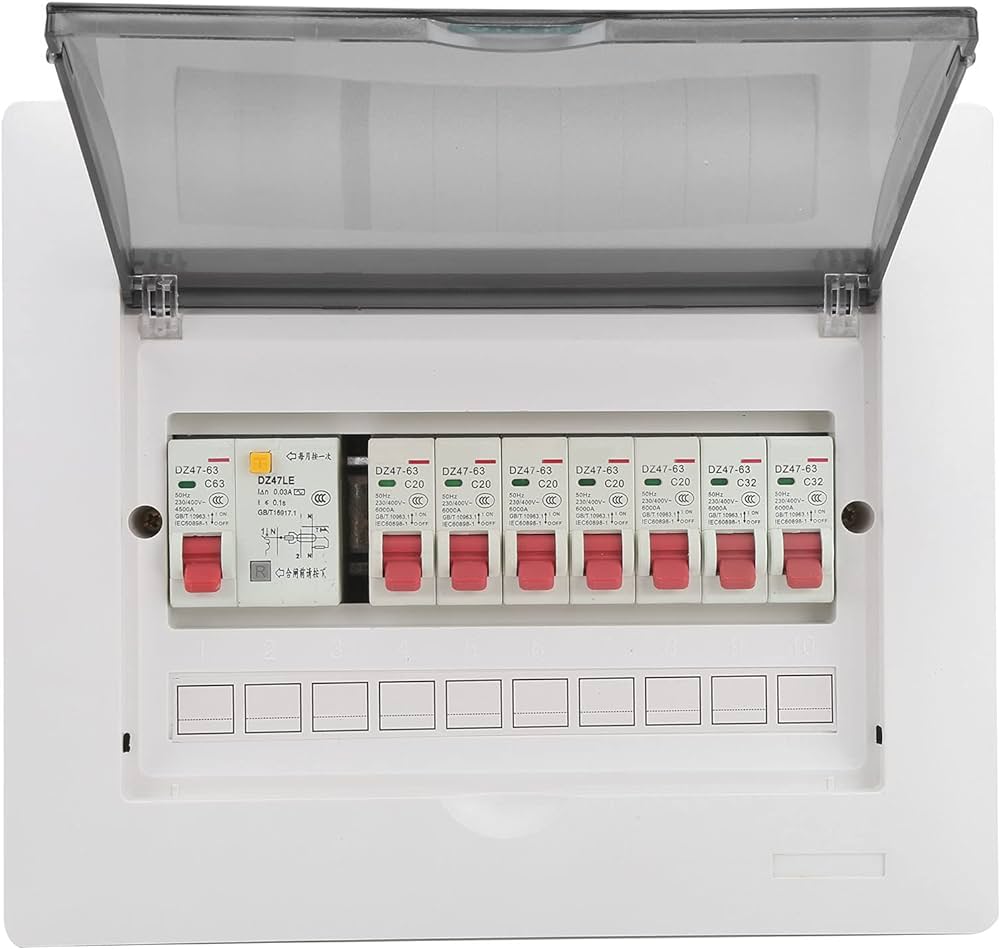
また、特に注意しなければならないのは、ほとんどの日本の住宅が同時に複数の高電圧機器を駆動できないということです。コーヒーマシンとオーブンを同時に使用すると、20秒以内にブレーカーが落ちます。したがって、事前に計画を立て、ブレーカーの場所も覚えておいてください。
Random Notes:
その他の気を付けたいこと:
Baking ingredients not available, very difficult to find, or not what you expected:
日本で入手困難な焼き菓子材料や希望するものと異なっている材料
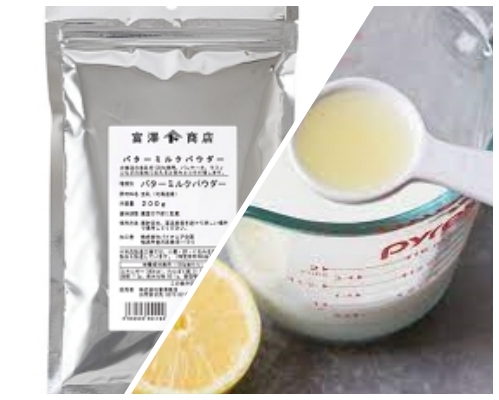
Buttermilk is often used in western baking but is not readily available in Japan. There is a powdered buttermilk that can be ordered from Tomiz or there’s even an faster and cheaper way. Making a substitut for buttermilk is easy and can be done with just two common kitchen ingredients: milk and an acid like lemon juice or vinegar. Here’s a simple method:
- Measure the Milk: Pour 240 ml milk into a measuring cup.
- Add the Acid: Add 1 T of lemon juice or white vinegar to the milk.
- Mix and Wait: Stir the mixture well and let it sit for about 5-10 minutes. During this time, the milk will start to curdle and thicken slightly.
- Use as Needed: After 5-10 minutes, your buttermilk substitute is ready to use in any recipe that calls for buttermilk.
バターミルク:
バターミルクは西洋の焼き菓子にしばしば使われますが、日本ではあまり手に入りません。富澤商店から注文できる粉末バターミルクがありますが、もっと早くて安い方法もあります。バターミルクの代用品を作るのは簡単で、牛乳とレモン汁や酢といった酸性の材料を使って作れます。以下が簡単な方法です:
- 牛乳を計る:計量カップに牛乳を240 ml注ぎます。
- 酸を加える:牛乳にレモン汁または白酢を大さじ1加えます。
- 混ぜて待つ:よくかき混ぜてから、約5〜10分間そのまま置きます。この間に、牛乳が凝固して少しとろみがつきます。
- 必要に応じて使用:5〜10分後、レシピでバターミルクを使用する必要があるときに使える代用品が完成します。
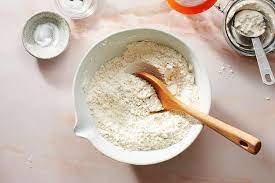
Self-rising Flour:
Self-rising flour offers the convenience of having baking powder and salt already mixed in, which simplifies and speeds up the baking process. It ensures consistent results by evenly distributing these ingredients, reduces the need for multiple ingredients, saves time, and minimizes the risk of measurement errors. These benefits make it particularly useful for quick baking recipes like biscuits, pancakes, and quick breads. However, it’s important to use it only in recipes that specifically call for self-rising flour to avoid disrupting the balance of ingredients.
セルフライジングフラワー:
セルフライジングフラワーは、ベーキングパウダーと塩が既に混ざっているため、ベーキングプロセスを簡素化し、時間を節約できます。これにより、これらの成分が均等に分散され、一貫した結果が得られます。また、必要な材料の数を減らし、計量ミスのリスクを最小限に抑えることができます。これらの利点により、ビスケット、パンケーキ、クイックブレッドのような簡単なベーキングレシピに特に便利です。ただし、セルフライジングフラワーは、特にその使用を指定しているレシピでのみ使用することが重要です。さもないと、成分のバランスが崩れてしまう可能性があります。
Sugar
There are differences in the types of sugar commonly used for baking in Japan versus the US. Here are some key distinctions:
Japan:
- 上白糖 (jōhakutō): This is a common type of white sugar in Japan that contains a small amount of molasses, making it slightly more moist and less sweet than typical granulated sugar in the US.
- グラニュー糖 (guranyūtō): Equivalent to granulated sugar in the US, but it is less common for everyday baking in Japan compared to 上白糖.
- 三温糖 (sanontō): This is a light brown sugar with a subtle caramel flavor, used in various Japanese sweets and traditional dishes.
- きび砂糖 (kibizatō): A type of unrefined cane sugar with a mild flavor and a slight molasses content, similar to raw sugar or turbinado sugar in the US.
- 粉砂糖 (kona-zatō): Powdered sugar, used similarly to confectioners’ sugar in the US, for icings and dusting.
US:
- Granulated Sugar: The most common type of sugar used in baking, it is dry and free-flowing with fine crystals.
- Brown Sugar: Available in light and dark varieties, this sugar contains molasses, giving it a moist texture and richer flavor.
- Powdered Sugar (Confectioners’ Sugar): Finely ground sugar mixed with a small amount of cornstarch to prevent clumping, used in icings and frostings.
- Turbinado and Demerara Sugar: Less processed sugars with larger crystals and a slight molasses flavor, used for their texture and flavor in certain recipes.
- Caster Sugar: A finer granulated sugar that dissolves quickly, often used in baking and cocktails.
Key Differences:
- Moisture Content: Jōhakutō in Japan is slightly moister than granulated sugar in the US.
- Flavor Variations: Japanese sugars like sanontō and kibizatō have distinct flavors due to their molasses content, which are less commonly used in the US.
- Usage Patterns: Jōhakutō is more commonly used in Japan for general baking, whereas granulated sugar is the standard in the US.
Understanding these differences can help in adapting recipes when baking in Japan or the US, ensuring the right texture and flavor are achieved.
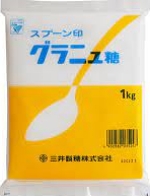
グラニュー糖
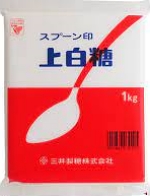
上白糖
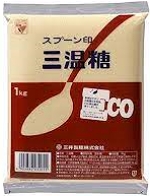
三温糖
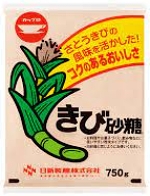
キビ砂糖
砂糖
日本と米国で一般的にベーキングに使用される砂糖の種類には違いがあります。以下は主な違いです:
日本:
- 上白糖(じょうはくとう): これは日本で一般的な白砂糖で、少量の糖蜜を含んでおり、通常の米国の粒状砂糖よりもやや湿り気があり、甘さが控えめです。
- グラニュー糖(ぐらにゅーとう): 米国の粒状砂糖に相当しますが、日本では上白糖と比べて一般的ではありません。
- 三温糖(さんおんとう): これは淡色の黒糖で、微かなキャラメルの風味があり、さまざまな日本のお菓子や伝統料理に使用されます。
- きび砂糖(きびざとう): 粗糖や黒糖に似た、やや甘い風味と少量の糖蜜を含む粗製のサトウキビ砂糖です。
- 粉砂糖(こなざとう): アイシングや粉吹きに使用される粉状の砂糖です。
米国:
- 粒状砂糖: ベーキングで最も一般的に使用される砂糖で、乾燥しており、微細な結晶を持っています。
- 黒砂糖: 明るい色と濃い色のバリエーションがあり、糖蜜を含んでおり、湿ったテクスチャーと豊かな風味が特徴です。
- 粉砂糖(パウダー糖): 細かく挽かれた砂糖に少量のコーンスターチを混ぜたもので、アイシングやフロスティングに使用されます。
- タービナード糖およびデメララ糖: 大きな結晶とわずかな糖蜜風味を持つ加工の少ない砂糖で、特定のレシピでの風味やテクスチャーを求めて使用されます。
- キャスター砂糖: 細かく挽かれた砂糖で、速く溶けるため、ベーキングやカクテルに使用されます。
主な違い:
- 湿度の違い: 日本の上白糖は、米国の粒状砂糖よりもわずかに湿り気があります。
- 風味の違い: 日本の三温糖やきび砂糖は、糖蜜の含有量により、独特の風味を持ちますが、これらは米国ではあまり一般的ではありません。
- 使用パターン: 日本では一般的に、一般的なベーキングに上白糖が使用されますが、米国では粒状砂糖が標準です。
これらの違いを理解することで、日本や米国でベーキングを行う際に、適切なテクスチャーや風味を実現できます。
There are differences in the types of butter commonly used for baking in Japan compared to the US. Here are the main distinctions: Japan:
- 生乳バター (nama nyū batā): This is fresh butter made from raw milk. It has a rich, creamy flavor and is often preferred for its freshness.
- 無塩バター (muen batā): Unsalted butter, similar to unsalted butter in the US, used in baking to control the salt content in recipes.
- 有塩バター (yuū en batā): Salted butter, less commonly used in baking in Japan compared to unsalted butter.
- Unsalted Butter: Commonly used in baking to control the salt content in recipes and to allow the baker to adjust the seasoning as needed.
- Salted Butter: Contains added salt for flavor. While it can be used in baking, unsalted butter is generally preferred for better control of the recipe’s saltiness.
- Cultured Butter: Made from cultured cream, this butter has a slightly tangy flavor and is often preferred for its richer taste in baking and cooking.
- Freshness and Flavor: Japanese butter, particularly 生乳バター, is often prized for its freshness and rich flavor derived from raw milk.
- Salt Content: Japanese butter tends to have less salt compared to American butter, and salted butter is less commonly used in Japanese baking.
- Cultural Preferences: The choice between salted and unsalted butter can vary based on cultural preferences and regional baking traditions.
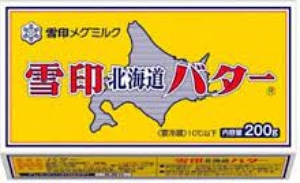
加塩バター
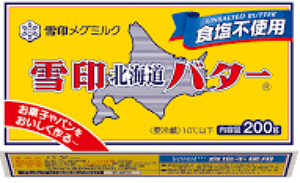
無塩 バター
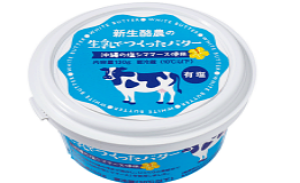
生乳バター
日本と米国で一般的にベーキングに使用されるバターの種類には違いがあります。以下は主な違いです: 日本:
- 生乳バター(なまにゅうバター): 生乳から作られた新鮮なバターです。リッチでクリーミーな味わいがあり、その新鮮さが好まれることがあります。
- 無塩バター(むえんバター): 米国の無塩バターに類似し、レシピ内の塩分をコントロールするためにベーキングに使用されます。
- 有塩バター(ゆうえんバター): 米国の無塩バターよりもベーキングであまり一般的ではありません。
- 無塩バター: レシピ内の塩分をコントロールするために一般的に使用され、必要に応じて調味を調整できます。
- 有塩バター: 味付けのために塩を添加したバターです。ベーキングに使用できますが、レシピの塩分をより良くコントロールするために、一般的に無塩バターが好まれます。
- カルチャーバター: 発酵クリームから作られたバターで、わずかに酸味があり、よりリッチな味わいがあります。
- 新鮮さと味わい: 特に生乳バターは、生乳から得られる新鮮でリッチな味わいが好まれることがあります。
- 塩分: 日本のバターは、米国のバターよりも塩分が少なく、有塩バターは日本のベーキングであまり一般的ではありません。
- 文化的な好み: 有塩バターと無塩バターの選択は、文化的な好みや地域のベーキングの伝統によって異なる場合があります。
There are many kinds of salt but how you store it is important because of the very high humidity in the summer. I keep in a salt shaker to which you can add some uncooked rice as an absorbent. There are differences in the types of salt commonly used in culinary practices between the US and Japan: Japan:
- 食塩 (shokuen): This is the most common type of salt used in Japan, similar to table salt in the US. It is finely ground and used for general cooking and seasoning.
- 塩こしょう (shiokoshō): A mixture of salt and pepper, often used as a seasoning for various dishes.
- 海塩 (Kaien): Sea salt, harvested from the sea, it has a slightly different flavor profile compared to regular table salt and is sometimes preferred for its perceived purity.
- Table Salt: This is the most commonly used salt in the US, finely ground and typically iodized for added nutritional value.
- Kosher Salt: Coarser grains than table salt, often preferred by chefs for its texture and ease of handling. It dissolves quickly, making it suitable for cooking and seasoning.
- Sea Salt: Harvested from evaporated seawater, sea salt comes in various grain sizes and may contain minerals that give it a distinct flavor.
- Himalayan Pink Salt: Mined from ancient sea beds in the Himalayan mountains, it is often used for its unique flavor and pink color, as well as its purported health benefits.
- Grain Size and Texture: Kosher salt in the US tends to have larger grains compared to table salt, which can affect how it’s used and its taste impact.
- Iodization: In the US, table salt is typically iodized to prevent iodine deficiency, whereas this is less common in Japan.
- Cultural Preferences: The choice of salt type can vary based on cultural preferences, culinary traditions, and availability.
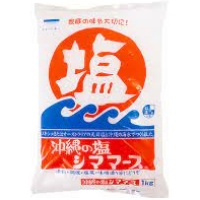
食塩
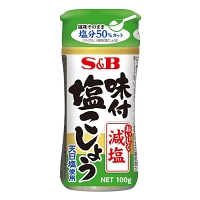
塩と胡椒の組み合わせ
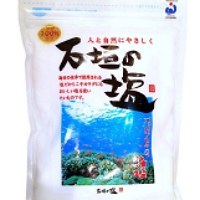
沖縄の海塩
塩にはさまざまな種類がありますが、夏の非常に高い湿度のため、その保存方法が重要です。私は、吸湿剤としていくつかの生の米を追加できる塩入れに入れています。米国と日本の間で一般的に使用される塩の種類には違いがあります。日本:
- 食塩(しょくえん): これは日本で最も一般的に使用される塩で、米国の食卓塩に類似しています。細かく挽かれており、一般的な料理や調味料として使用されます。
- 塩こしょう: 塩と胡椒の混合物で、さまざまな料理の調味料として使用されます。
- 海塩(かいえん): 海から採取された塩で、通常の食塩とは異なる風味プロファイルを持ち、純度が高いと見なされるため、時々好まれます。
- 食卓塩: 米国で最も一般的に使用される塩で、細かく挽かれ、通常は栄養価を高めるためにヨウ素化されています。
- コーシャ塩: 食卓塩よりも粒が粗いもので、そのテクスチャーと取り扱いの容易さから、シェフによって好まれます。速く溶けるため、料理や調味料に適しています。
- 海塩: 蒸発した海水から採取される海塩は、さまざまな粒のサイズで提供され、独特の風味を持つミネラルが含まれる場合があります。
- ヒマラヤピンクソルト: ヒマラヤ山脈の古代の海底から採掘されたもので、その独特の風味やピンク色、および健康上の利点から使用されることがあります。
- 粒のサイズとテクスチャー: 米国のコーシャ塩は、食卓塩よりも粒が大きい傾向があり、それが使用方法や味に影響を与える可能性があります。
- ヨウ素化: 米国では、食卓塩は通常、ヨウ素欠乏を防ぐためにヨウ素化されていますが、日本ではそれが一般的ではありません。
- 文化的な好み: 塩の種類の選択は、文化的な好み、料理の伝統、および入手可能性に基づいて異なる場合があります。
Eggs:
There are differences in eggs between the US and Japan, including factors such as size, production methods, and grading systems.
Size:
- US: In the US, eggs are typically classified into sizes ranging from small to jumbo. The most common sizes are medium, large, and extra-large.
- Japan: Eggs in Japan are also categorized by size, but the classifications may differ slightly. Common sizes include small (小), medium (中), and large (大).
Production Methods:
- US: In the US, both conventional and cage-free production methods are common. Cage-free and free-range eggs are also increasingly popular due to consumer demand for more ethical and sustainable practices.
- Japan: Japan has a variety of production methods for eggs, including conventional cage systems as well as free-range and organic farming practices. Like in the US, there is growing interest in cage-free and free-range eggs in Japan.
Grading Systems:
- US: Eggs in the US are graded based on quality and size by the USDA (United States Department of Agriculture). Grades include AA, A, and B, with AA being the highest quality.
- Japan: Eggs in Japan are also graded based on quality, but the grading system may differ. The grading standards are set by the Japan Egg Grading Association and include grades such as AA, A, and B, similar to the US.
Shell Color:
- US: Eggshell color can vary in the US, ranging from white to brown, depending on the breed of the hen.
- Japan: Similarly, eggshell color in Japan can vary, but white eggs are more common.
Other Factors:
- Labeling and Packaging: Labeling and packaging practices may vary between the US and Japan, reflecting different regulations and consumer preferences.
- Consumer Preferences: Cultural differences and dietary preferences may influence the demand for certain types of eggs, such as cage-free or organic, in each country.
While there are similarities in egg production and grading between the US and Japan, differences in size classifications, packaging, and consumer preferences can impact the availability and selection of eggs in each country.
*In Japan, eggs are typically not refrigerated at the retail level. Instead, they are often stored at room temperature, both in stores and at home. This is because eggs in Japan are typically unwashed and retain a natural protective coating called the bloom or cuticle. This protective coating helps to prevent bacteria from entering the eggshell. Therefore, refrigeration is not considered necessary for maintaining egg freshness in Japan. However, once eggs are washed or if their protective coating is removed, as is common in the US, they should be refrigerated to maintain their quality and safety.
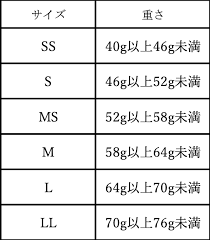
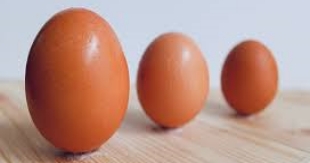
大・中・小
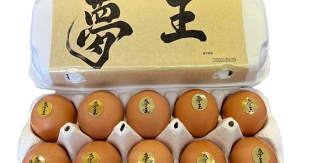
日本では1カートンに10個の卵が入れています。
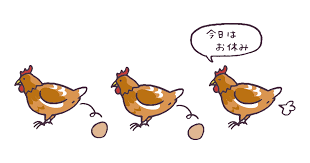
今日は休み
卵:
米国と日本の間には、卵のサイズ、生産方法、グレーディングシステムなどの違いがあります。
サイズ:
- 米国: 米国では、卵は一般的に小さなものからジャンボまでのサイズに分類されます。最も一般的なサイズは、ミディアム、ラージ、エクストララージです。
- 日本: 日本の卵もサイズ別に分類されますが、分類方法は若干異なる場合があります。一般的なサイズには、小、中、大があります。
生産方法:
- 米国: 米国では、従来の飼育方法とフリーレンジの方法が一般的です。消費者がより倫理的で持続可能な方法を求めることから、ケージフリーおよびフリーレンジの卵もますます人気があります。
- 日本: 日本では、従来のケージシステムに加えて、フリーレンジや有機栽培の方法など、さまざまな卵の生産方法があります。米国同様に、日本でもケージフリーやフリーレンジの卵に対する関心が高まっています。
グレーディングシステム:
- 米国: 米国の卵は、品質とサイズに基づいて米国農務省(USDA)によってグレード分けされます。AA、A、Bなどのグレードがあり、AAが最高品質です。
- 日本: 日本の卵も品質に基づいてグレード分けされますが、グレーディングシステムは異なる場合があります。グレーディング基準は日本卵類協会によって設定され、AA、A、Bなどのグレードがあり、米国と類似しています。
卵の殻の色:
- 米国: 米国では、卵の殻の色は、鶏の品種によって異なり、白から茶色まで様々です。
- 日本: 同様に、日本の卵の殻の色も様々ですが、白い卵がより一般的です。
その他の要因:
- ラベリングとパッケージング: ラベリングとパッケージングの方法は、規制や消費者の好みの違いを反映して、米国と日本の間で異なる場合があります。
- 消費者の好み: 文化的な違いや食事の好みが、各国での特定のタイプの卵の需要に影響を与える可能性があります。
米国と日本の間には卵の生産とグレーディングに類似点がありますが、サイズの分類、パッケージング、消費者の好みの違いが、各国での卵の入手性と選択肢に影響を与える可能性があります。
*日本では、一般的に卵は小売りレベルでは冷蔵されません。代わりに、通常、店舗や家庭で室温で保存されます。これは、日本の卵が通常洗浄されず、自然な保護被膜であるブルームまたはキューティクルを保持しているためです。この保護被膜は、細菌が卵の殻に入るのを防ぐのに役立ちます。したがって、日本では卵の新鮮さを保つために冷蔵する必要はありません。ただし、一度卵が洗浄された場合や、米国などで一般的に行われているように保護被膜が除去された場合は、品質と安全性を維持するために冷蔵する必要があります。
This and that...
なんやかんや
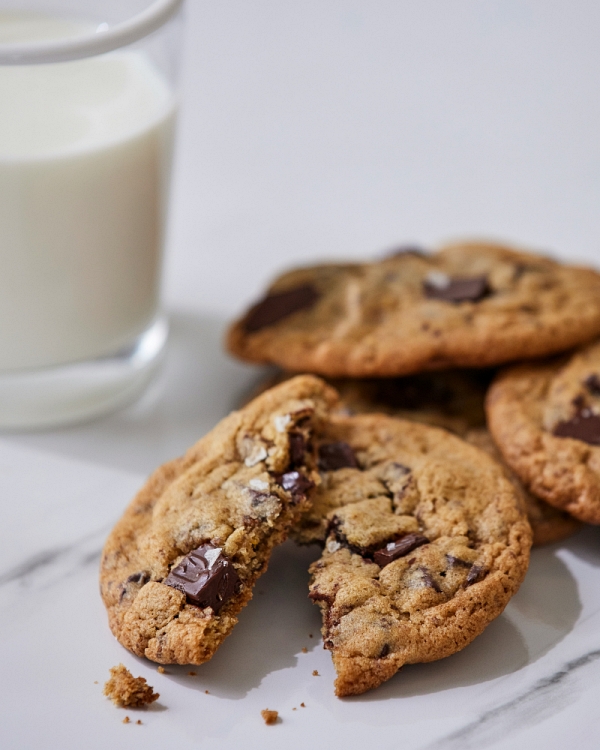
American desserts may be too sweet for some tastes. It’s fine to reduce sugar amounts but there is no set rule because it depends on the recipe. All you can do is start with a 10% reduction and see how it goes from there. Click here for more information.
アメリカのデザートは一部の人にとって甘すぎるかもしれません。砂糖の量を減らしても構いませんが、レシピによって異なるため、決まったルールはありません。10%の減量から始めて、その後に調整をしてください。
- Non-Stick Properties: Cooking sprays create a thin, even layer of oil on surfaces, preventing food from sticking to pans, trays, and molds. This makes it easier to remove baked goods and cooked items without damaging their shape or texture.
- Even Coating: Sprays provide a more uniform coating compared to spreading butter or oil with a brush or paper towel, ensuring consistent coverage and better results in cooking and baking.
- Calorie Control: Using cooking spray can help reduce the amount of oil or butter used in recipes, which can be beneficial for those looking to control calorie intake.
- Convenience: Cooking sprays are quick and easy to use, saving time and effort in food preparation and cleanup. They are especially handy when working with intricate molds or small crevices.
- Versatility: Cooking sprays can be used for a variety of kitchen tasks, including greasing baking pans, coating measuring cups to prevent sticky ingredients from sticking, and lightly oiling grills and stovetop pans.
- Less Mess: Using a spray minimizes the need for additional utensils like brushes or spatulas, reducing the number of items that need to be cleaned after cooking.

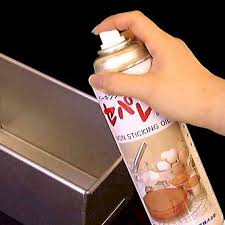
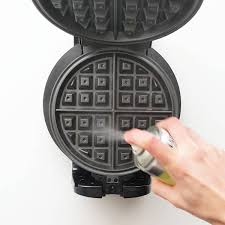
料理やベーキングスプレー: 料理やベーキングスプレーを使用することには、いくつかの利点があります:
- ノンスティック性: 料理用スプレーは、表面に薄く均一な油の層を作り、食品がパンやトレイ、型にくっつかないようにします。これにより、焼き菓子や調理済みの食品を形や食感を損なうことなく取り出しやすくなります。
- 均一なコーティング: スプレーは、ブラシやペーパータオルでバターや油を塗るよりも均一なコーティングを提供し、一貫したカバーとより良い結果を得ることができます。
- カロリーコントロール: 料理用スプレーを使用することで、レシピで使用する油やバターの量を減らすことができ、カロリー摂取量をコントロールしたい人にとって有益です。
- 利便性: 料理用スプレーは素早く簡単に使用でき、食品の準備や後片付けの時間と手間を節約できます。特に複雑な型や小さな隙間に作業する際に便利です。
- 多用途: 料理用スプレーは、焼き型に油を塗ること、計量カップに粘りつく成分がくっつかないようにすること、グリルやコンロのパンに軽く油を塗ることなど、さまざまなキッチン作業に使用できます。
- 汚れが少ない: スプレーを使用することで、ブラシやヘラなどの追加の道具を必要とせず、調理後の洗い物を減らすことができます。
Recipe Abbreviation:
⋅ g = gram
⋅ ml = milliliters
⋅ ltr = liter
⋅ C = cup (standard Japanese size)
All recipes use the metric system. In baking, always weigh dry ingredients by weight for better results.
レシピの略語:
⋅ g = グラム
⋅ ml = ミリリットル
⋅ ltr = リットル
⋅ C = カップ(標準の日本サイズ)
すべてのレシピはメートル法を使用しています。ベーキングでは、乾燥した材料を常に重量で計量するとより良い結果が得られます。
